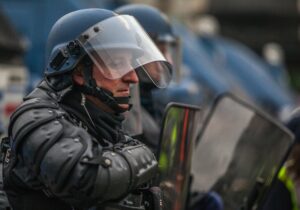What is De-armouring?
What is Body Armour and the Work of Wilhelm Reich

De-armouring is a term which has evolved following the work of Wilhelm Reich. He was a psychoanalyst who studied this phenomenon in the 1930’s. He noticed that his patients’ character traits, taken together, formed a defence against those emotions which they felt to be dangerous in some way. These defences could be created through experiencing the stresses of everyday life, big shock traumas, or even repeated negative thought patterns.
Reich noticed that there was a somatic muscular armour which corresponded to this ‘character armour’. This was made up of physical tensions, cramps and spasms and was the expression of emotions or ideas which had been repressed. He found that these could become stored in the body when not properly expressed and processed at the time of occurrence.
Over time, these constrictions can harden causing the ‘armouring’ of the body’s tissues. Further contractions can occur when the muscular reactions are re-triggered by memories. This armour stops the free flow of life-force energy through the body. As a result of the ‘armour’, the physical body can become de-sensitised to both pleasure and pain, and become numb.
Removing the Armour
Reich found that the armour could be removed by applying certain bodywork techniques to soften the body. Through deep tissue massage and pressing on certain points in the body, numb and painful areas can be transformed back into pleasure areas. This happens by releasing the physical tension and underlying trapped emotions. These have often been stored in the body in the nervous system and on a cellular level, sometimes for decades. Reich found that by removing the physical and emotional blocks, orgasmic capacity can be increased, and this heals the body. His work has led to the development of many body-based therapies, and overlaps with such therapies as Bowen, rolfing, craniosacral, trigger point and Shiatsu.
Practice of De-armouring in Other Cultures
The practice of removing so-called armour is not new and has been practised for centuries by different cultures around the world, under different names and variations. Native American tribes and shamans around the world have facilitated the improvement of health and happiness for people by freeing them from any pain which they may have felt. Traditional Chinese medicine reflects some of the concepts of de-armouring in the practice of acupressure, in which certain points in the body are pressed to release pain and emotion and free up the flow of chi in the body.
Modern De-armouring
Modern de-armouring is a bodywork practice in which deep pressure is applied to different points in the body. Combined with staying conscious and aware of what is happening in the body, these techniques can bring up to the surface various memories, sensations and feelings. In some cases, these may not have been felt or remembered for a long time – even for decades. The pressure also helps to release physical tension from the body. Many people may at first struggle to feel much sensation in the body, as over many years they have become out of touch with what sensations, emotions or instincts they are feeling. These clients can be helped by being invited to slowly come back to, and feel everything in, their bodies. This is the gateway to healing. Read more about the role of mindfulness in tantric massage therapy.
De-armouring techniques can help with getting rid of tension and toxins, removing blocks, releasing negative memories, beliefs and emotions. Tantric de-armouring includes the whole body and helps to open up the body’s natural energy pathways so that the healing life force, or sexual, energy may flow through the whole body unobstructed. The therapy is holistic and includes the whole body, as tension and underlying emotions can be stored in any part. Both external and internal techniques are used.
Genital De-armouring
As part of the whole body treatment, clients are also offered genital de-armouring, if and when they are ready. This is the part of the body that can hold a lot of trauma from being shamed, hurt or touched without respect or consent. Many of us carry negative messages about the genitals and sexuality, which we have often received in childhood. Over time, this can manifest as physical pain in the pelvic area and cause, or contribute to, sexual dysfunction.
Genital massage can help to start to release the pain and underlying emotion that is often felt in that area. For men, prostate massage can help to deeply relax the body. Read more about the benefits of prostate massage for men. For women, a yoni massage can help to heal from many traumas of womanhood. These include having a difficult birth, shame around starting or having periods, painful sex (dyspareunia), unwanted sex, and many more. Read more about the art of yoni massage. Receiving conscious, loving and consensual touch from the therapist is healing and beneficial in and of itself. The client decides where is OK and not OK for them to be touched, and is able to pause or stop the session at any time. Clients’ boundaries are respected at all times.
Further Information
I offers sessions in Teesside / North Yorkshire (within easy driving distance of Leeds, Newcastle, York, Durham) and London. Read more about tantric therapy treatments